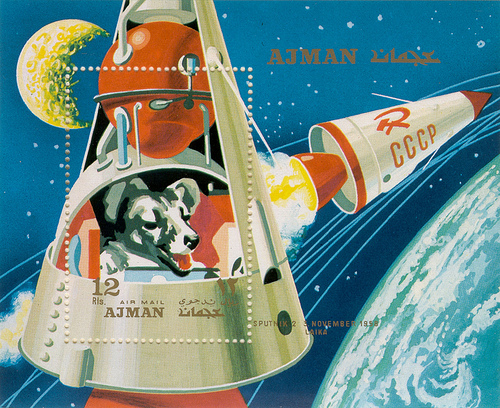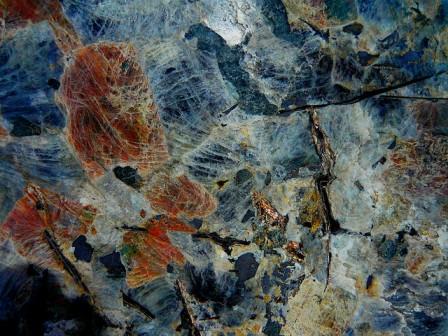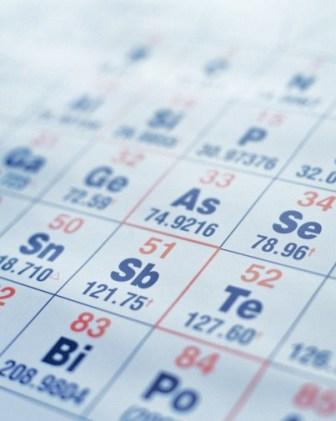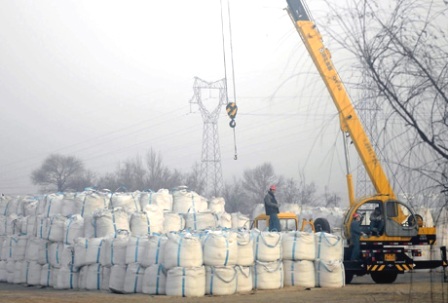
When the USSR collapsed Russia inherited over a thousand tons of weapons-grade uranium and a massive nuclear refining and fabricating infrastructure – 40% of world total. During the twenty year Megatons to Megawatts Program Russia will convert 500 tonnes of highly enriched uranium (HEU – uranium 235 enriched to 90 percent) from dismantled Russian nuclear weapons into low enriched uranium (LEU – less than 5 percent uranium 235) for nuclear fuel and sell it to the US. The terms of the Megatons to Megawatts Program also required that the HEU be converted to LEU in Russian nuclear facilities.
The United States established a government corporation – United States Enrichment Corporation (USEC) to purchase and transport the LEU to the US. Russia designated Tekhsnabeksport (“Tenex”) a commercial subsidiary of its Ministry of Atomic Energy (MinAtom) to implement their side of the program.
The Megatons to Megawatts program had, as of August 2011, down-blended 425 tonnes of HEU – equivalent to 17,000 nuclear warheads. The twenty year program to down-blend 500 tonnes of weapons grade Russian HEU into fuel for nuclear reactors will eliminate the equivalent of 20,000 warheads by the time it comes to an end in 2013. Nuclear warheads that were once on Russian ICBMs aimed at American cities are now providing 50% of the electricity produced by America’s nuclear power plants.
Russian stockpiles of weapons grade material being down-blended for civil nuclear reactors has filled a very large part of global uranium demand. This has exerted significant downward pressure on uranium prices. Long term low uranium prices, which just starting to climb before the Japanese nuclear accident, seriously affected mining activity.
The world’s uranium miners currently produce 40 million pounds less than the world’s nuclear power plants need – this figure doesn’t include the power plants under construction or the hundreds in planning stages. According to the World Nuclear Association, China is currently building 26 reactors with plans for dozens more, the UK has plans to build eight more, Russia has 10 reactors under construction, 14 planned, and another 30 proposed. India has 6 reactors under construction, 17 planned, and another 40 proposed.
A host of other countries plan to build nuclear capacity, or expand upon their existing nuclear power capacities – emerging markets such as Brazil, Saudi Arabia, United Arab Emirates, Turkey, and Vietnam as well as developed nuclear markets such as South Korea, Canada and France. Some believe that Germany’s decision to close all of its reactors will be reversed and the Japanese closing all of their reactors is unlikely.
The Megatons to Megawatts Program, according to the USEC, was supplying roughly 50% of the US’s LEU demand. Mining accounted for 8% with the rest coming from other sources (rapidly depleting utility and government stockpiles).
A ten year replacement contract, signed in March 2011, will see Tenex continue to supply low-enriched uranium (LEU) from Russian commercial enrichment activities to the USEC after the Megatons to Megawatts program finishes. Under the terms of the contract, the supply of LEU to the USEC will begin in 2013 and ramp up until it reaches a level, in 2015, that is approximately one-half the level currently supplied by TENEX to the USEC under the Megatons to Megawatts program. There is an option clause to increase the quantities up to the same level of supply as the Megatons to Megawatts program.
Unlike the Megatons to Megawatts program, the LEU supplied under this new contract will come from Russia’s commercial enrichment activities rather than from down-blending of weapons grade material.
Because the allowed amount of Russian enriched uranium imports into the US is strictly limited through 2020, USEC will deliver only a portion of the enriched uranium to US utilities. Most of the enriched uranium will be delivered to USEC’s customers outside of the US in both existing and emerging markets. The uranium sourcing for the new contract is extremely significant.
The U.S. has 104 nuclear reactors operating, this is the largest fleet of nuclear reactors in the world making the U.S. the world’s largest uranium market. In 2010 the US nuclear reactor fleet required between 51 to 55 million pounds of uranium. The mined supply of uranium in the U.S. in 2010 was about four million pounds. The U.S. is producing only about eight percent of the required amount of uranium to keep the existing U.S. nuclear fleet running.
Russia doesn’t have a lot of domestic uranium, although the country does have almost half the worlds refining and processing capabilities. Russia is in the process of tying up uranium supply:
- Russia’s Rosatom, its nuclear agency, and Kazatomprom, Kazakhstan’s national nuclear development corporation, have set up a joint venture to market uranium and together will dominate the global uranium market;
- Russia and Mongolia, in April 2008, agreed to cooperate in identifying and developing Mongolia’s uranium resources. Further bilateral agreements were signed in August 2009 and December 2010. Russian legislation was signed into law in early 2011 ratifying establishment of a joint, limited liability company called Dornod Uran – 49% owned by ARMZ;
- ARMZ Uranium Holding Co. (AtomRedMetZoloto) is a Russian uranium mining company, its wholly owned by Atomenergoprom, a part of Rosatom, Russia’s state-owned atomic energy monopoly. Rosatom owns a 51 percent interest in Canada’s Uranium One (TSX: UUU);
- In December 2010 ARMZ made a $1.15 billion takeover bid for Australia’s Mantra Resources Ltd. Mantra had the Mkuju River project in southern Tanzania, which is expected to be in production in 2013 at 1400 tU/yr.
What conclusions can be drawn? Let’s consider the facts:
- The price of commercially mined uranium will no longer be depressed by a steady stream of HEU down-blends into the marketplace – the legacy feedstock kitty is going to come to an end. There is already an imbalance between mined supply and demand – the demand for uranium is higher than the supply. This difference is currently being met from the decommissioning of nuclear warheads but the Megatons to Megawatts Program is ending in 2013;
- Emphasis to meet growing demand will be on mined uranium but the world is already short 40m tonnes of mined uranium;
- Many of the world’s developing and developed countries will start or continue to build nuclear power plants further increasing the demand for mined uranium supply;
- Low uranium prices means there hasn’t been significant investment in new mines, lower prices make new projects less attractive – this will constrain the supply of uranium going forward;
- The Russians are tying up supply, soon they will be the dominant player in the global uranium market;
- Resource Nationalization, Country Risk and Security of Supply will mean areas of the globe will be off limits to western miners and countries will increasingly be looking after their own interests. Access to uranium deposits in safe, stable and secure environments will become increasingly dear;
- Many companies will find it challenging to get permits for uranium mines because of negative public sentiment.
RBC Capital Markets believes there is not enough uranium production from current or planned mines to; satisfy current reactor needs, meet new reactor start up initial core requirements (3x normal load for startup), and to build inventories for new reactors. RBC estimate there will be a global uranium shortfall of over 70 million pounds by 2020 and the uranium market will require substantial new sources of uranium to fuel the projected growth in the global nuclear reactor fleet.

Major mining companies are looking to enter the potash business, or expand existing operations, as they look for increased demand from developing nations such as China, India and Brazil.
“This is a solid business and the big mining companies agree. If they can find a way to participate in it, they will.” Mark Connelly, New York brokerage Sterne Agee.
BHP Billiton – In the spring of 1869 a German Chemist named Charles Rasp immigrated to Australia for his health. Unable to find work in his chosen trade Charles learned to ride a horse and began wrangling sheep. One day, while out riding his horse at Broken Hill, he discovered mineralized rock. He took out a mining lease, punched holes in the ground and eventually found rich veins of silver. The Broken Hill Proprietary Company – BHP – was incorporated in 1885 while mining silver and lead at Broken Hill in western New South Wales.
Billiton was a mining company that got its start in September 1860 when the articles of association were approved by a meeting of shareholders in the Groot Keizerhof Hotel in The Hague, Netherlands. Shortly afterwards the company acquired the mineral rights to the tin-rich islands of Banka and Billiton off the eastern coast of Sumatra.
Nicknamed “the Big Australian”, BHP is the world’s largest mining company. It was created in 2001 by the merger of Australia’s Broken Hill Proprietary Company and Anglo-Dutch Billiton. Today BHP produces – oil, natural gas, bauxite, aluminum, copper, silver, lead, zinc, uranium, diamonds, coal, titanium, well, you get the idea, they’re miners, they pull “stuff” out of the ground and sell it.
BHP, seeking to benefit from surging demand for fertilizer, made a $40 billion hostile bid for Potash Corp. of Saskatchewan Inc. Yielding to political pressure, Canada’s Federal government nixed the deal. BHP paid $341 million, C$8.35/share, to acquire Saskatoon’s Athabasca Potash. The acquisition gave BHP Athabasca’s Burr Project, which is located next to BHP’s Jansen Project. BHP announced on 24th June 2011, a further investment of US$488 million to support development at its Jansen Potash Project. This piece of additional capital will fund site preparation and the procurement of long lead time items during the project’s feasibility study. This funding will also enable BHP to develop the first 350 meters of the production and service shafts. The announcement takes BHP Billiton’s investment in Jansen to, so far, $1.2 billion.
Vale S.A. – Formerly known as Companhia Vale do Rio Doce (CVRD) was founded by the Brazilian Federal Government in June 1942. The company was privatized in 1997 when the Brazil Consortium bought just over 40% of the Federal Government’s stock.
Even though Vale has operations in the energy and logistics sectors both sectors combined contribute less than ten percent to Vales total revenues. Vale is a miner and controls the Brazilian iron ore industry owning all Brazilian iron ore exporters. In recent years, in an attempt to diversify its operations, Vale has made a string of purchases getting into copper, kaolin, nickel and coal. In October 2006 Vale bought Canada’s second largest mining company, Inco, for $18.9 billion. Vale also produces manganese, ferroalloys, bauxite, potash (Sergipe mine in Brazil), alumina and aluminum.
Vale S.A. has moved into the fertilizer business in a big way. In January of 2009, Vale bought Rio Tinto’s potash assets in Argentina and Saskatchewan Canada for US$850. In January 2010, Vale announced it would acquire all the shares of Bunge Participacoes e Investimentos S.A. (BPI). Vale will pay $1.65 billion US for BPI – for its wholly owned phosphate mining operations in Brazil – and another $ 2.15 billion US for its 42.3 percent in Fertilizantes Fosfatados S.A. (Fosfertil) – a leading Brazilian fertilizer company. Engineering work has started at Vales Rio Colorado solution mining potash project in Mendoza, Argentina. Estimated start-up is for the second half of 2014 with a nominal capacity of 4.3 Mt per year of potash.
Vale said it’s planning to consolidate its position in the potash industry by taking its fertilizer unit private. The change would give the Brazilian-based miner more control over the business that now represents about 2 per cent of global potash production. Vale is planning to build a $3 billion potash project in Saskatchewan, and has other potash projects in its pipeline.
Rio Tinto – A site along the Rio Tinto river in the Andalusian Province of Huelva, Spain has been mined for copper, silver, gold, and other minerals since 3000 BC. After being lost for centuries the mines were rediscovered in 1556, the Spanish government began operating them in 1724 but sold them in 1873 to Matheson and Co. Hugh Matheson formed a syndicate consisting of Deutsche Bank (56% ownership), Matheson (24%), and railway firm Clark, Punchard and Company (20%). The syndicate registered the Rio Tinto Company on 29 March 1873. The Rothschild family had control by the end of the 1880s.
After selling its South American and Saskatchewan (Canada) potash assets in 2009 to cut debt Rio has re-entered the potash business. The company is teaming up with North Atlantic Potash Inc. – the Canadian subsidiary of Russia’s JSC Acron, a fertilizer producer – to hunt for potash in Saskatchewan. A joint venture between Aluminum Corp. of China (Chinalco) and Rio Tinto has received approval for exploration in China. The JV will initially focus on exploring for copper in China but has plans to expand into coal and potash.
K+S AG – Bought Canada’s Potash One, the previous owners of Legacy, in a 2010 deal worth $434 million. Potash prices at the time were 40% lower than today. After saying on March 8th 2011 that it expects global demand for potash to rise 3-5 percent per annum, Europe’s largest (and the worlds fourth largest) potash producer, Germany’s K+S AG said on November 29th 2011 that it will move forward with construction of its $3.2 billion Legacy project in Saskatchewan.
The reality is the potash story is just starting. Unlike other resource plays there is no cycle, demand is expected to rise year over year making potash an excellent play in what some expect will be a long term agricultural commodities bull market.
Future Demand – “Just when we need more soil to feed the 10 billion people of the future, we’ll actually have less—only a quarter of an acre of cropland per person in 2050, versus the half-acre we use today on the most efficient farms.” David Montgomery, author of the 2007 book Dirt: The Erosion of Civilizations
Fertilizers are becoming increasingly important for many reasons:
- There’s 220,000 people being born every day, that’s 220,000 more mouths to feed every day;
- An increasing disposable income in a growing middle class, more money in more pockets means more and more people climbing the protein ladder;
- Loss of arable land, topsoil degradation;
- Desertification and climate change;
- The Green Revolution’s impact on crop production is declining, in some cases reversing;
- Some older mines are going to become more inefficient or be lost;
- Underutilization of potash in many countries;
- Demand from the countries whose economies are starting to develop and have the ability to get into farming;
- Security of supply.

The evidence is mounting that the commodity markets will get back to “normal” after the sovereign debt crisis is resolved and growth from China, India, Africa and other developing nations is confirmed.
Gus Gunn, of the British Geological Survey, has identified three main factors behind the steep rise in commodities demand this decade:
- Urbanization that is accompanied by a rise in the standard of living;
- Population increase; and,
- Development of new technologies whose components and gadgets are based on an ever broader base of elements.
By 2025, nearly 2.5 billion Asians will live in cities, accounting for almost 54 percent of the world’s urban population. India and China alone will account for more than 62 percent of Asian urban population growth and 40 percent of global urban population growth from 2005 to 2025.
There is no shortage of individual reasons why some argue that the price of commodities will continue to rise, but when taken together the evidence starts to be overwhelming:
- Finite raw materials;
- Unstable weather patterns;
- Chronic supply constraints;
- Increasing population base;
- Growing global middle class;
- Low real interest rates;
- Shifting global trade patterns;
- Continued monetization of European and US debt;
- Persistent Dollar and Euro feebleness – our political masters attempting to devalue our way to prosperity;
- The need for asset diversification; and
- Speculation.
Will all of these reasons, working together, translate into higher commodity prices? Have today’s worries only temporarily unseated a commodities supercycle? Is the recent sell-off nothing more than a short downturn within a secular bull market for commodities?
Since the financial crisis of 2008, resource companies have:
- Cut their debt;
- Built up their cash reserves to considerable levels; and,
- Are generating solid cash flow.
Based on actual earnings resource stocks are priced where they were at the bottom in 2008 and mining stocks are selling at single digit price earnings ratios. Bottom line? High quality resource stocks should be on every investor’s radar.

The Province of British Columbia, Canada is experiencing a mining renaissance. What’s happening in the province, in regards to mining, should be on every investors radar screen.
Vancouver is undoubtedly one of the greatest mining centers in the world and British Columbia should be a mining powerhouse when one considers the province has favourable characteristics:
- Excellent geology – British Columbia is mineral rich and hugely underexplored.
- Good transportation system.
- Reasonable mining regulations.
- Competitive tax rates.
- Strategic location with respect to Asian markets. Two modern ports, Vancouver – Canada’s largest and the Port of Prince Rupert which is the closest of any of North America’s West Coast ports to Asia – up to 58 hours of sailing time shorter.
- High quality and easily accessible geological data.
- Mining friendly provincial government.
- Communities receptive to resource extraction as a livelihood.
- Attractive exploration incentives.
- BC is the third largest generator of hydro electricity in Canada – one of the lowest power costs in North America. Natural gas is plentiful, cheap and resources are growing.
- Some of the most modern education and telecommunications infrastructure in the world.
Land claims of the First Nations remain a stumbling block in many areas – perhaps in part because so many claims overlap – but First Nations are now coming to understand and embrace resource development as a way to generate training, jobs and financial security for their people and their communities. While things are not always as smooth, dialogue is taking place and things are getting done – projects are moving forward.
About the sector, Gavin C. Dirom President and CEO of the Association of Mineral Exploration B.C., recently stated, “BC-based mineral explorers and developers appreciate the key measures that were announced in today’s federal budget. Maintaining the Mineral Exploration Tax Credit and reducing red tape will help sustain Canada’s mineral exploration and mining sector, encourage capital investment and ultimately benefit all Canadians well into the future.”
BC is taking the lead in regulatory reform – the largest cut in red tape could come from dropping the duplication of process in regards to environmental assessments. B.C. has taken the position that the province’s own process already takes into account the responsibilities of the federal government and that doing a second duplicate federal review forces a company to spend more money and time on needless duplication of process.
The process does work – three major mines are being constructed, six major mines are in advanced development, and over eighteen mining projects are in earlier stages of environmental assessment. In addition, there’s a very real trend by major mining companies towards making deals with junior resource companies that presently own copper-gold porphyry projects in BC:
- Tiex/Newmont.
- Novagold/Teck Resources.
- Cariboo Rose/Gold Fields.
- Terrane Metals/Goldcorp.
- Kiska Metals (formerly Rimfire Metals)/Xstrata.
- Serengeti/Freeport.
- Strongbow/Xstrata.
- Copper Mountain/Mitsubishi.
Copper-gold porphyries can offer both size and profitability. These kinds of deposits are one of the few deposit types containing gold that have both the scale and the potential for decent economics that a major mining company can feel comfortable going after to replace and add to their gold reserves.

In its Critical Materials Strategy, the U.S. Department of Energy (DOE) focused on materials used in four clean energy technologies:
• Wind turbines – permanent magnets.
• Electric vehicles – permanent magnets & advanced batteries.
• Solar cells – thin film semi conductors.
• Energy efficient lighting – phosphors.
The DOE says they selected these particular components for two reasons. The deployment of the clean energy technologies that use them is projected to increase, perhaps significantly, in the short, medium and long term; and that each uses significant quantities of rare earth metals or other key materials.
In its report the DOE provided data for nine rare earth elements and indium, gallium, tellurium, cobalt and lithium. Five of the rare earth metals – dysprosium, neodymium, terbium, europium and yttrium – as well as indium, were assessed as most critical in the short term. The DOE defines “criticality” as a measure that combines importance to the clean energy economy and risk of supply disruption.
In another report by the APS Panel on Public Affairs and the Materials Research Society a second term was coined, “energy-critical element” (ECE), to describe a class of chemical elements that currently appear critical to one or more new, energy related technologies.
“Energy-related systems are typically materials intensive. As new technologies are widely deployed, significant quantities of the elements required to manufacture them will be needed. However, many of these unfamiliar elements are not presently mined, refined, or traded in large quantities, and, as a result, their availability might be constrained by many complex factors. A shortage of these energy-critical elements (ECEs) could significantly inhibit the adoption of otherwise game-changing energy technologies. This, in turn, would limit the competitiveness of U.S. industries and the domestic scientific enterprise and, eventually, diminish the quality of life in the United States.”
According to the APS report several factors can contribute to limiting the domestic availability of an ECE:
• The element may not be abundant in the earth’s crust or might not be concentrated by geological processes.
• An element might only occur in a few economic deposits worldwide, production might be dominated by and, therefore, subject to manipulation by one or more countries – the United States already relies on other countries for more than 90% of most of the ECEs identified in the report.
• Many ECEs have, up to this point, been produced in relatively small quantities as by-products of primary metals mining and refining. Joint production complicates attempts to ramp up output by a large factor.
• Because they are relatively scarce, extraction of ECEs often involves processing large amounts of material, sometimes in ways that do unacceptable environmental damage.
• The time required for production and utilization to adapt to fluctuations in price and availability of ECEs is long, making planning and investment difficult.
This report was limited to elements that have the potential for major impact on energy systems and for which a significantly increased demand might strain supply, causing price increases or unavailability, thereby discouraging the use of some new technologies.
• Gallium, germanium, indium, selenium, silver, and tellurium – employed in advanced photovoltaic solar cells, especially thin film photovoltaics.
• Dysprosium, neodymium, praseodymium, samarium and cobalt – used in high-strength permanent magnets for many energy related applications, such as wind turbines and hybrid automobiles.
• Gadolinium (most REEs made this list) for its unusual paramagnetic qualities and europium and terbium for their role in managing the color of fluorescent lighting. Yttrium, another REE, is an important ingredient in energy-efficient solid-state lighting.
• Lithium and lanthanum, used in high performance batteries.
• Helium, required in cryogenics, energy research, advanced nuclear reactor designs, and manufacturing in the energy sector.
• Platinum, palladium, and other PGEs, used as catalysts in fuel cells that may find wide applications in transportation. Cerium, a REE, is also used as an auto-emissions catalyst.
• Rhenium, used in high performance alloys for advanced turbines.
A third report entitled, “Critical Raw Materials for the EU” listed 14 raw materials which are deemed critical to the European Union. Specifically, antimony, beryllium, cobalt, fluorspar, gallium, germanium, graphite, indium, magnesium, niobium, platinum group metals, rare earths, tantalum and tungsten.
“Raw materials are an essential part of both high tech products and every-day consumer products, such as mobile phones, thin layer photovoltaics, Lithium-ion batteries, fibre optic cable, synthetic fuels, among others. But their availability is increasingly under pressure according to a report published today by an expert group chaired by the European Commission. In this first ever overview on the state of access to raw materials in the EU, the experts label a selection of 14 raw materials as “critical” out of 41 minerals and metals analyzed. The growing demand for raw materials is driven by the growth of developing economies and new emerging technologies.”
For the critical raw materials, their high supply risk is mainly due to the fact that a high share of the worldwide production mainly comes from a handful of countries including China (Rare Earth Elements), Russia & South Africa (Platinum Group Elements) and the Democratic Republic of Congo (Cobalt).
Providing a comparative analysis of all three reports one will find that only four critical materials appear on each list. These are rare earth elements (REE), cobalt, platinum group elements (PGE), and lithium.
And the key common issues in regards to what defines “critical materials” are:
• Finite resources.
• Chinese market dominance in many sectors.
• Long lead times for mine development.
• Resource nationalism/country risk.
• High project development cost.
• Relentless demand for high tech consumer products.
• Ongoing material use research.
• Low substitutability.
• Environmental crackdowns.
• Low recycling rates.
• Lack of intellectual knowledge and operational expertise in the west.

China mines REEs from bastnasite ore in the provinces of Gansu and Sichuan. In Inner Mongolia REEs are obtained as a by-product from iron making.
HREE extraction, based on ion absorption clays, occurs in the states of Guangdong, Hunan, Jiangxi and Jiangsu. These clays have very low cerium content and as a consequence the other REEs, in particular the HREEs, comprise a much larger share of the ore than is found elsewhere.
Currently Chinese ion absorption ore is the main source for HREE and resources are not published. There may be the possibility of discovering new ion absorption deposits in Southeast Asia, however high costs for labor, lack of infrastructure and environmental restrictions may render these new deposits uneconomical when competing in the market place with Chinese output.
China has 36 to 53 percent of the world’s REE deposits (industry figures differ) and supplies 97 percent (this number is constant) of the global demand for rare earth elements. The low cost and unregulated production from China’s large deposits forced the closure of almost every rare earth mine outside of China.
Tighter limits on production and lowered export quotas are being put in place to ensure China has the necessary supply for its own technological and economic needs – in 2006 volume dropped to 48,000 tonnes. In 2007 volume dropped to 43,574 tonnes, in 2008 volume dropped to 40,987 tonnes and in 2009 to 33,300 tonnes. In 2010 China dropped its annual REE export quota by 37% and then announced an additional 35% drop in its H1 2011 export quota.
In a hunt to secure jobs, and access to advanced technologies, the Chinese have forced manufacturers needing access to REEs to make their products in China. These manufacturers must either cut back production or build their factories/products in China – recently major producers of the magnet material Neodymium-Iron-Boron have transferred their operations to China.
Demand for Rare Earths is forecasted to grow at 8-11% per year between 2011 and 2014. Many experts are predicting that the Chinese, and those end users who moved to China for security of supply, will be internally consuming most of the countries rare earth production by about 2014 (forecast demand, source: IMCOA presentation).
Rare earth demand is driven by several global macroeconomic trends:
- Miniaturization
- Environmental protection
- Increasing demand for energy, power and fuel efficiency
The highest demand growth is expected for magnets and metal alloys – hybrid and electric vehicles along with wind turbines (also High Speed Rail) will compete for the essential materials and there are no substitutions for the REEs used in these applications. An increased use of energy efficient fluorescent lights and growing demand for LCDs, PDPs will increase the use of phosphors.
The French Bureau de Recherches Géologiques et Minières rates high tech metals as critical, or not, based on three criteria:
- Possibility (or not) of substitution
- Irreplaceable functionality
- Potential supply risks
It’s very obvious REEs are critical metals and that the west is going to need a secure, long term supply of rare earth elements completely independent of Chinese control.
If you would like to receive our free newsletter via email, simply enter your email address below & click subscribe.
CONNECT WITH US
Tweets
Tweet with hash tag #miningfeeds or @miningfeeds and your tweets will be displayed across this site.
MOST ACTIVE MINING STOCKS
Daily Gainers
 Lincoln Minerals Limited Lincoln Minerals Limited |
LML.AX | +125.00% |
      |
GCR.AX | +33.33% |
      |
CASA.V | +30.00% |
      |
AHN.AX | +22.22% |
      |
ADD.AX | +22.22% |
      |
AZM.V | +21.98% |
      |
NSE.V | +21.05% |
      |
DYG.V | +18.42% |
      |
AAZ.V | +18.18% |
      |
GLA.AX | +17.65% |

 Follow us on Twitter
Follow us on Twitter Become our facebook fan
Become our facebook fan







